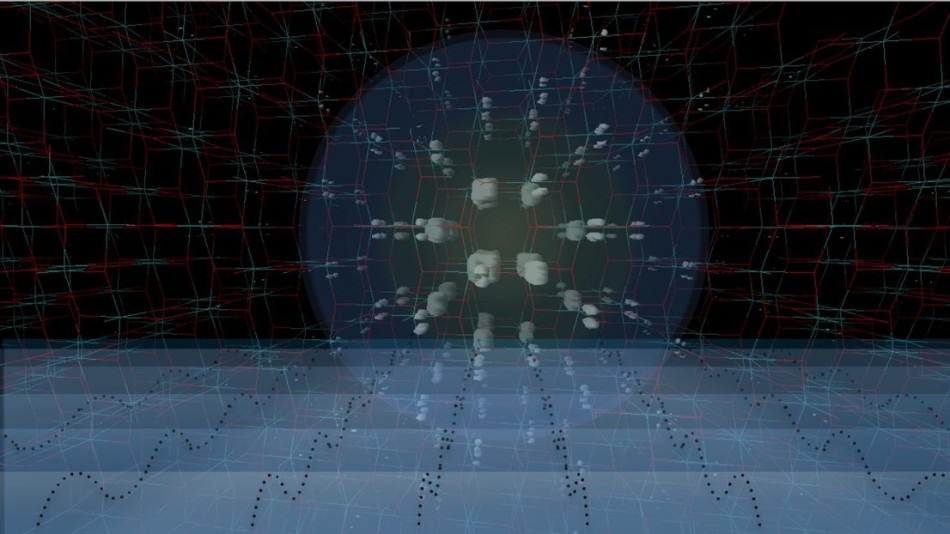Dec 2 2019
Physicists from France, Germany, and Switzerland have discovered that the optical response of semiconductors can be dynamically controlled by large-amplitude acoustic waves. These waves are launched by ultrashort laser pulses.
 Illustration of the exciton of TiO2 interacting with a propagating coherent acoustic wave. Image Credit: Adriel Dominguez (Max Planck Institute, Hamburg).
Illustration of the exciton of TiO2 interacting with a propagating coherent acoustic wave. Image Credit: Adriel Dominguez (Max Planck Institute, Hamburg).
Achieving high tunability of the optical characteristics of semiconductors, specifically at room temperature, is one of the major difficulties in materials science research. Such characteristics are controlled by “excitons”—bound pairs of positive holes and negative electrons in a semiconductor.
Excitons have turned out to be increasingly significant in the field of optoelectronics, and the quest for control parameters has also increased in the last few years; the control parameters include pressure, temperature, and magnetic and electric fields—that can alter the excitonic characteristics.
But changes that are moderately large have been realized only at low temperatures and under equilibrium conditions. So far, considerable variations at ambient temperatures, which are crucial for applications, have not been achieved yet.
Now, this has just been realized in the laboratory of Majed Chergui at EPFL within the Lausanne Centre for Ultrafast Science, in association with the theory groups of Angel Rubio from the Max-Planck Institute, Hamburg and Pascal Ruello from the Université de Le Mans.
For the first time, the international research team has demonstrated how excitonic characteristics can be manipulated using acoustic waves. To accomplish this feat, the scientists introduced a large-amplitude, high-frequency (hundreds of gigahertz) acoustic wave in a material through ultrashort laser pulses.
Using this approach, the exciton characteristics can be further dynamically controlled at high speed. The study has been published in the Science Advances journal.
This extraordinary outcome was achieved on titanium dioxide at room temperature, an abundantly available and low-cost semiconductor that is employed in an array of light-energy conversion technologies like transparent conductive substrates, photocatalysis, and photovoltaics.
Our findings and the complete description we offer open very exciting perspectives for applications such as cheap acousto-optic devices or in sensor technology for external mechanical strain.
Majed Chergui, Lausanne Centre for Ultrafast Science, EPFL
Chergui continued, “The use of high-frequency acoustic waves, as those generated by ultrashort laser pulses, as control schemes of excitons pave a new era for acousto-excitonics and active-excitonics, analogous to active plasmonics, which exploits the plasmon excitations of metals.”
These results are just the beginning of what can be explored by launching high-frequency acoustic waves in materials. We expect to use them in the future to control the fundamental interactions governing magnetism or trigger novel phase transitions in complex solids.
Edoardo Baldini, Study Lead Author, MIT
Other contributors to the study are the Max Planck Institute for the Structure and Dynamics of Matter, the University of the Basque Country, the CNRS Joint Research Units, and the Simons Foundation (Flatiron Institute).
The study was funded by the Swiss National Science Foundation (NCCR: MUST and R’EQUIP), European Research Council (Advanced Grant DYNAMOX), and Horizon 2020.